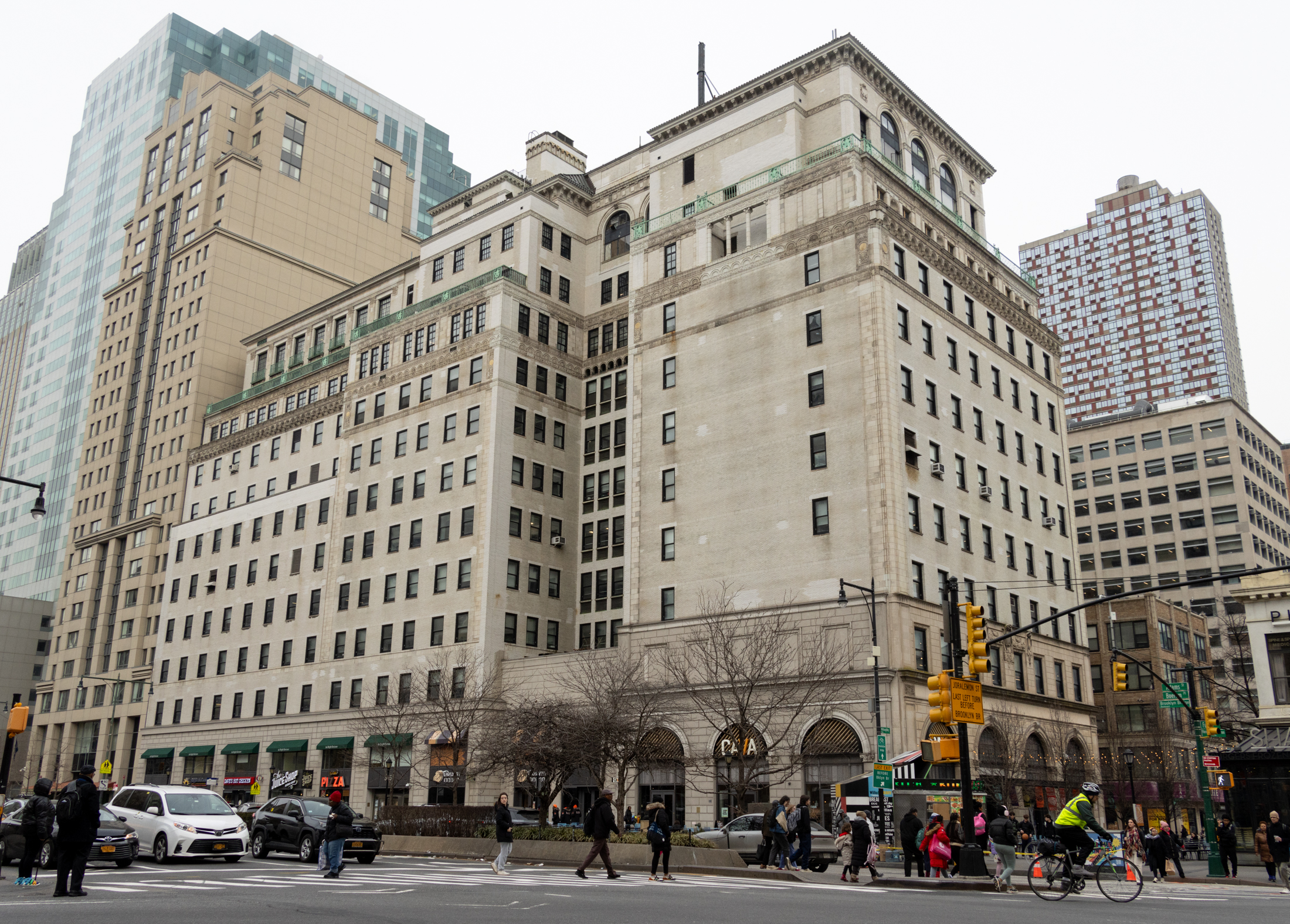Building of the Day: 101-111 Carlton Avenue
Brooklyn, one building at a time. Name: Brooklyn Garden Apartments Address: 101-111 Carlton Avenue Cross Streets: Myrtle and Park Avenues Neighborhood: Wallabout Year Built: 1930, southern extension: 1932 Architectural Style: Moderne Architect: Frank H. Quimby, extension by W. H. McCarthy Other Work by Architect: many buildings in Brooklyn and Manhattan Landmarked: No, but part of…

Brooklyn, one building at a time.
Name: Brooklyn Garden Apartments
Address: 101-111 Carlton Avenue
Cross Streets: Myrtle and Park Avenues
Neighborhood: Wallabout
Year Built: 1930, southern extension: 1932
Architectural Style: Moderne
Architect: Frank H. Quimby, extension by W. H. McCarthy
Other Work by Architect: many buildings in Brooklyn and Manhattan
Landmarked: No, but part of proposed expanded Wallabout HD
The story: It’s not easy to build affordable housing in this city. Anyone who reads the headlines, or this blog, knows that. Those who can’t afford market rate or higher in this crazy world of bidding wars and high prices have always been at the mercy of the market and the good will of some kind of private or government program. But housing reform is not a new phenomenon, there have been those who have always thought that there was causality between living conditions and poverty, and have long sought to build or establish decent and affordable housing for those who didn’t have too many choices in where they lived. One of these reformers was a man named Louis Heaton Pink.
Louis Pink was born in Wisconsin, but came to NYC after college and a law degree. The year was 1906, and instead of pursuing a career in law or finance, he began working with the settlements in the Lower East Side, and became a great advocate for housing and the social welfare of the poor. The rest of his life would be dedicated to civic and social services. Although he was involved with many other causes and projects throughout his long career, he’s best remembered for his work in insurance and housing. His tenure as State Insurance Chairman and Superintendent of Insurance beginning in the late 1930s led to the creation of New York State’s Blue Cross Plan. He was president and chairman of the Associated Hospital Service, Blue Cross’ parent agency, until the 1950s, continually working to increase benefits and coverage.
He remained a fierce advocate for housing for the poor, no matter his other jobs. He was the Chairman of the State Housing Board, during which time he wrote a book, as well as several articles about the role of government in public housing. He strongly felt that only a combination of public and private money could eradicate slums, and believed that if people could not live in a safe, decent and affordable home, they would not be able to do the many things necessary to raise themselves up out of poverty. Education, jobs, opportunities; all were greatly dependent on a decent place to live.
His efforts led to the creation of the New York City Housing Authority, and he one of the first board members of that organization. At various times during his career, he was also a member of the NYC Board of Education, the United Housing Foundation, and in 1952, the fundraising chairman of the National Foundation for Infantile Paralysis. (Polio) He was an active and busy man until suffering a fatal heart attack at the age of 72, in 1955. Men like him don’t come around often. One of Brooklyn’s largest housing projects, The Louis H. Pink Houses, in East New York, is named for him. Sadly for his legacy, the Pink Houses have a reputation of being the worst projects in the city.
This apartment complex was built back in 1930, long before the Housing Authority and the first housing projects. These were model apartments built by the Brooklyn Garden Apartments, Inc., a limited partnership developed by Louis Pink to provide well thought out, light and air filled apartments for working people of limited means. There are actually two buildings in this complex; the other is directly behind this one, facing out on Adelphi Street.
Both are built of textured over-burned brick, a popular building material of the day. The apartments all face out over the large back courtyards, and have plenty of windows and ventilation. The courtyards were landscaped, and all of the apartments had courtyard access. In 1932, another wing was added to the original building, designed by W.H. McCarthy, who matched the original seamlessly. Frank H. Quimby, the original architect, had a long career in Manhattan and Brooklyn, from the end of the 19th century, well into the 20th. He was a member of the Executive Committee of the Dept. of Architecture at the Brooklyn Institute of Arts and Science, and although not as well-known as some of his compatriots, had a fulfilling career. This building must have come somewhat near his retirement.
The building may not be a looker, but it’s an important part of the history of housing in Brooklyn. It represents efforts taken before public housing was created, to building affordable housing for working families. As a private development, it helped show that it was possible to create decent housing in working class neighborhoods that could easily pass the test of time, using popular, as well as sturdy and good materials, with careful design and planning. GMAP
(Photo: Sarah Westcott for PropertyShark)









What's Your Take? Leave a Comment